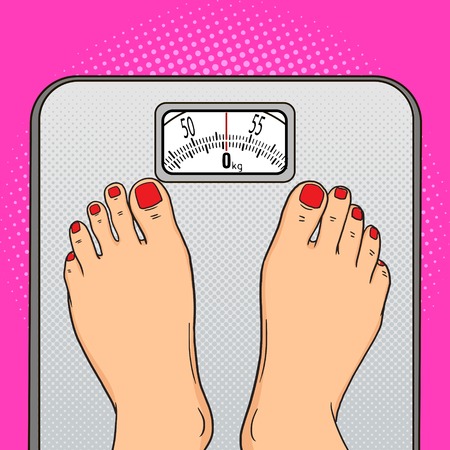Introduction to At-Home Body Contouring
In recent years, at-home body contouring devices have surged in popularity across the United States, reflecting a significant shift in how Americans approach personal aesthetics and wellness. These do-it-yourself (DIY) devices promise users the ability to sculpt and tone their bodies conveniently from the comfort of their own homes. As professional treatments such as CoolSculpting or laser lipolysis can be expensive and time-consuming, many consumers are turning to at-home alternatives for their cost-effectiveness and ease of use. The appeal lies not only in saving money but also in the flexibility these devices offer for busy lifestyles, eliminating the need for appointments or travel to specialized clinics. This trend is further fueled by increased awareness of non-invasive cosmetic technology through social media and online reviews, making it easier for individuals to research and purchase products that align with their personal goals. As more people seek accessible solutions for body shaping, understanding how these devices work and what sets them apart from professional treatments becomes increasingly important.
2. How Do At-Home Body Contouring Devices Work?
At-home body contouring devices utilize a range of technologies designed to reduce stubborn fat and improve skin tone without the need for professional intervention. Understanding how these devices work requires examining the underlying scientific principles. The most common technologies include radio frequency (RF), ultrasound, and cryolipolysis. Each method targets fat cells differently, employing physics and biology to achieve visible results.
Radio Frequency (RF)
RF devices use electromagnetic waves to generate heat within the skin’s deeper layers. This thermal energy disrupts fat cells (adipocytes) and stimulates collagen production, leading to tighter skin and gradual fat reduction. The heat damages the integrity of fat cell membranes, causing them to break down over time. The body then naturally processes and removes the released fatty acids through metabolic pathways.
Key Scientific Principle: Dielectric Heating
Radio frequency induces rapid oscillation of water molecules in tissues, producing controlled heat that selectively affects subcutaneous fat without harming surrounding structures.
Ultrasound Technology
Ultrasound-based contouring devices emit focused sound waves at specific frequencies. These waves penetrate the skin and create rapid pressure changes that destabilize fat cell membranes, a process known as cavitation. As a result, the fat cells rupture, releasing their contents into the interstitial fluid where they are eventually eliminated by the lymphatic system.
Key Scientific Principle: Acoustic Cavitation
The application of targeted ultrasonic energy leads to microbubble formation and collapse within adipose tissue, mechanically disrupting fat cells while leaving other tissues intact.
Cryolipolysis
Cryolipolysis—commonly referred to as “fat freezing”—works by cooling localized areas of body fat to a temperature that causes fat cells to undergo apoptosis (programmed cell death) without damaging skin or muscle tissue. Over several weeks following treatment, the body metabolizes and removes these dead cells naturally.
Key Scientific Principle: Selective Cryolysis
Lipid-rich adipocytes are more susceptible to cold than surrounding water-rich cells. By exploiting this difference, cryolipolysis selectively destroys fat while sparing healthy tissue.
Comparison Table: At-Home Body Contouring Technologies
| Technology | Main Mechanism | Targeted Effect | Expected Outcome |
|---|---|---|---|
| Radio Frequency (RF) | Dielectric heating via electromagnetic waves | Fat cell disruption & collagen stimulation | Slimmer appearance & tighter skin |
| Ultrasound | Acoustic cavitation from focused sound waves | Rupture of fat cell membranes | Gradual fat reduction in treated areas |
| Cryolipolysis | Selective cooling (cryolysis) | Induces apoptosis in adipocytes | Noticeable loss of localized fat deposits |
Each technology offers a unique approach for home users seeking non-invasive body sculpting solutions. By leveraging fundamental scientific concepts, these devices provide accessible alternatives for individuals aiming to improve their physique with minimal downtime and risk.

3. Comparing At-Home Devices to Professional Treatments
When considering body contouring solutions, American consumers face a choice between at-home devices and professional treatments offered in medspas. Understanding the science behind these options is key to making an informed decision. Let’s break down the differences in effectiveness, safety standards, and expected results.
Effectiveness: Consumer Devices vs. In-Office Procedures
At-home body contouring devices typically use technologies such as low-level laser therapy (LLLT), radiofrequency (RF), or ultrasound at lower energy settings due to FDA regulations for consumer safety. While these devices can offer visible improvements in skin tightness or localized fat reduction with consistent use, their power output is intentionally limited compared to equipment used by licensed professionals. In contrast, medspa treatments like CoolSculpting, Emsculpt, or high-intensity focused ultrasound deliver higher energy levels with precise targeting, often resulting in more dramatic and faster results after fewer sessions.
Safety Standards and Regulation
Home-use devices are designed with user safety as a top priority; they incorporate built-in safeguards such as automatic shut-offs, preset modes, and lower maximum energy outputs. These features minimize risks of burns, excessive discomfort, or misuse. However, professional treatments are performed by trained clinicians who can assess skin type, monitor tissue response in real time, and adjust parameters for optimal outcomes—reducing adverse events through personalized protocols and medical oversight. The U.S. Food and Drug Administration (FDA) rigorously regulates both categories, but clinical-grade equipment undergoes more extensive trials and scrutiny before approval for medical use.
Results: What Can You Expect?
Results from at-home devices tend to be gradual and subtle; users should expect incremental improvement over several weeks or months of regular application. These tools are best for maintenance or minor contouring rather than significant reshaping. On the other hand, professional procedures usually offer more noticeable changes in body shape or fat reduction after just one or two sessions. Recovery times are minimal for both options, though mild swelling or redness is more common after in-office treatments due to their intensity.
In summary, while at-home body contouring devices provide accessible and safe entry points for those seeking modest improvements, American medspa treatments remain the gold standard for individuals desiring pronounced and clinically validated outcomes. The decision ultimately depends on your goals, budget, and willingness to invest time versus seeking immediate transformation under expert supervision.
4. Assessing Safety and Regulatory Standards
When it comes to at-home body contouring devices, understanding safety and regulatory standards is crucial for American consumers. The U.S. Food and Drug Administration (FDA) plays a pivotal role in ensuring that these devices meet specific requirements before they reach the market. Here’s what you need to know about FDA clearance, essential safety protocols, and best practices for safe use at home.
FDA Clearance: What Does It Mean?
FDA clearance indicates that a device has been reviewed by the agency and found to be substantially equivalent to another legally marketed device in terms of safety and effectiveness. Its important to distinguish between FDA “approval” and “clearance”—most non-invasive body contouring devices are typically cleared, not approved, under the 510(k) process. This means they have demonstrated similar performance to existing products but may not have undergone as rigorous clinical trials as approved medical devices.
| Term | Description | Implication for Consumers |
|---|---|---|
| FDA Approved | Device underwent extensive clinical testing for safety and efficacy | Typically used for medical-grade or invasive devices |
| FDA Cleared | Device is substantially equivalent to an already marketed device | Most at-home body contouring tools fall into this category |
| Not Evaluated by FDA | No review or clearance by the FDA | Increased risk—use with caution or avoid entirely |
Key Safety Protocols for At-Home Use
- Read the Instructions Carefully: Follow all manufacturer guidelines regarding usage duration, frequency, and maintenance.
- Avoid Off-Label Use: Only use the device on recommended areas of the body; using it elsewhere may cause injury or ineffective results.
- Monitor Skin Response: Check for irritation, burns, or other adverse effects after each session.
- Consult with Healthcare Providers: If you have underlying health conditions or are pregnant, consult your doctor before starting any at-home body contouring regimen.
- Keep Devices Clean: Proper hygiene prevents infections and prolongs device lifespan.
The Importance of Consumer Awareness in the US Market
The availability of over-the-counter body contouring devices has grown rapidly in the United States. However, not all devices are created equal—some may lack proper labeling, be counterfeit, or fail to comply with federal regulations. US consumers should verify FDA clearance by checking the FDA’s database or requesting documentation from manufacturers. When purchasing online or from third-party sellers, extra vigilance is needed to avoid unauthorized imports that might bypass US safety standards.
Main Takeaways for US Consumers:
- Always prioritize devices with clear FDA clearance documentation.
- Follow manufacturer instructions meticulously to minimize risks.
- Avoid products making exaggerated claims not supported by science or FDA review.
- If unsure about a product’s legitimacy or safety, consult healthcare professionals or check with the FDA directly.
Navigating safety and regulatory considerations empowers consumers to make informed decisions while reducing potential health risks associated with at-home body contouring technologies in the US market.
5. User Expectations and Realistic Results
When it comes to at-home body contouring devices, setting realistic expectations is crucial for user satisfaction and long-term success. These devices utilize technologies such as radiofrequency, ultrasound, or electrical muscle stimulation to help reduce localized fat and improve skin appearance, but their results are inherently gradual and often less dramatic than professional clinical treatments. Users should understand that visible changes typically require consistent use over several weeks or months, and results may vary based on individual factors like age, body composition, and targeted area.
Maintenance Is Key
Achieving and maintaining desired outcomes with at-home body contouring requires an ongoing commitment. Most manufacturers recommend a regular schedule of sessions—sometimes several times per week—to maximize efficacy. After initial results are achieved, periodic maintenance sessions are often necessary to preserve improvements in body shape or skin firmness. Skipping sessions or inconsistent use can lead to diminished results over time.
The Role of Lifestyle Choices
No device can substitute for a healthy lifestyle. For optimal results, users should pair device treatments with balanced nutrition, regular physical activity, adequate hydration, and sufficient sleep. Body contouring tools are designed to complement—not replace—these fundamental habits. Relying solely on technology without addressing overall health will likely lead to limited or short-lived benefits.
Understanding Limitations
It’s important for consumers to recognize that at-home devices are best suited for subtle improvements rather than significant fat reduction or weight loss. They are not intended for treating obesity or replacing medical procedures like liposuction. Setting clear goals based on scientific evidence and product guidelines will help users avoid disappointment and make informed decisions about their personal care routines.
6. Tips for Choosing the Right Device
With a growing number of at-home body contouring devices on the market, making an informed purchase requires more than just reading product descriptions. Here’s a practical guide for U.S. shoppers to evaluate features, verify manufacturer claims, and protect your investment.
Assessing Key Features
Start by identifying your specific goals—are you targeting stubborn fat, loose skin, or cellulite? Look for devices that clearly state their technology, such as radiofrequency (RF), ultrasound, or cryolipolysis. Check technical specifications including power output, treatment modes, safety certifications (like FDA clearance), and user interface. Devices that offer adjustable settings allow you to customize treatments according to comfort and effectiveness.
Investigating Manufacturer Claims
Don’t take marketing language at face value. Research whether the manufacturer provides clinical trial data or peer-reviewed studies supporting their claims. Look for evidence on efficacy and safety published in reputable scientific journals or referenced by regulatory agencies. Genuine brands typically have transparent information regarding the science behind their products, including before-and-after photos and customer testimonials from verified buyers in the U.S.
Understanding Regulatory Status
In the United States, body contouring devices should have FDA clearance if they are intended for cosmetic use at home. Check the manufacturer’s website or the FDA database for confirmation. This ensures the device meets basic standards for safety and performance.
Reviewing Return Policies and Warranties
Before clicking “buy,” thoroughly review the seller’s return policy—especially since results can vary between individuals. Reputable U.S.-based retailers often provide a 30-day satisfaction guarantee or flexible return options. Additionally, consider warranty coverage for device malfunctions or defects; a solid warranty indicates confidence in product quality.
Compare Customer Support Services
A responsive customer support team is essential if you encounter issues during setup or use. Prioritize companies with accessible support channels, detailed FAQs, and positive service reviews from American consumers.
Final Thoughts
Choosing an at-home body contouring device is both a technical and financial decision. By prioritizing scientific credibility, clear safety standards, and transparent business practices tailored to U.S. shoppers, you can make a confident investment in your self-care routine.


